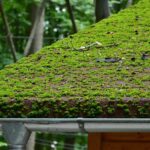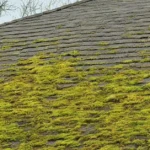Every small building, whether a cozy home or a commercial space, needs a well-designed roof drainage system to protect it from water damage. Without proper drainage, water can accumulate, leading to leaks, structural damage, and even mold growth. In this guide, we will explore the importance of roof drainage systems for small buildings and how they function to keep your property safe and dry.

Why Are Roof Drainage Systems Important?
Proper drainage is essential for maintaining the integrity of your building. When water is not effectively directed away from the roof, it can lead to a host of problems. By implementing an efficient roof drainage system, you prevent potential water damage, extend the life of your roof, and enhance the overall safety of your building.
Preventing Water Accumulation
Water accumulation on roofs can cause significant damage over time. It can lead to leaks which may damage ceilings, walls, and even furniture. An effective roof drainage system ensures that rainwater is collected and redirected away from the roof surface, preventing these issues.
Extending Roof Lifespan
A well-maintained drainage system can significantly extend the lifespan of your roof. By preventing the buildup of water, you reduce the risk of water-related damage and the need for costly repairs.
Components of Roof Drainage Systems
Understanding the components of roof drainage systems is crucial for ensuring their effectiveness. Common components include gutters, downspouts, and drains. Each plays a vital role in directing water away from the building.
Gutters
Gutters are channels that run along the roof’s edge, collecting rainwater and directing it towards the downspouts. They are essential for preventing water from cascading directly off the roof, which can erode the foundation and landscape.
Downspouts
Downspouts are vertical pipes that carry water from the gutters to the ground. They are crucial for directing water away from the building’s foundation, preventing potential structural damage.
Drains
Drains are often used in flat roof systems to collect water and funnel it away from the building. They are essential for preventing standing water on flat surfaces, which can cause leaks and other issues.
Types of Roof Drainage Systems
There are various types of roof drainage systems designed to suit different building needs. The choice of system depends on the roof type, building structure, and climate conditions.
Traditional Gutter Systems
Traditional gutter systems are the most common type of drainage system. They consist of gutters and downspouts that guide water away from the roof and foundation.
Scupper Drains
Scupper drains are openings in the side of a building that allow water to drain off flat roofs. They are often used in conjunction with gutters to enhance water management.
Internal Drains
Internal drains are pipes installed within the roof structure, directing water to the ground through the building’s interior. These systems are ideal for flat roofs, providing an effective way to manage water.
Maintaining Roof Drainage Systems
Regular maintenance of roof drainage systems is essential for ensuring their functionality. Neglecting maintenance can lead to clogs, leaks, and other issues that compromise the system’s effectiveness.
Regular Inspections
Conduct regular inspections of your drainage system to identify any potential issues early. Look for signs of wear, clogs, or damage that may require attention.
Cleaning Gutters and Downspouts
Ensure that gutters and downspouts are free from debris, such as leaves and twigs, which can cause blockages. Regular cleaning prevents clogs and ensures the smooth flow of water.
Repairing Damage
Address any damage to your drainage system promptly. Repairing leaks, cracks, or other issues ensures that your system continues to function effectively.
Choosing the Right Roof Drainage System
Selecting the appropriate roof drainage system for your small building is crucial for effective water management. Consider factors such as roof type, climate, and building structure when making your choice.
Assessing Roof Type
Understand the unique needs of your roof type, whether it’s flat, sloped, or a combination of both, to select the most suitable drainage system.
Evaluating Climate Conditions
Consider the climate in your area when choosing a drainage system. For instance, areas with heavy rainfall may require more robust systems to handle the increased water volume.
Considering Building Structure
Take into account the structure of your building, including the foundation and surrounding landscape, to ensure the drainage system effectively directs water away without causing damage.

FAQs
What is the best type of drainage system for flat roofs?
Internal drains are often the best choice for flat roofs as they collect water and direct it away from the building efficiently.
How often should gutters be cleaned?
Gutters should be cleaned at least twice a year, preferably in spring and fall, to prevent clogs and ensure proper drainage.
Can poor drainage affect my building’s foundation?
Yes, poor drainage can lead to water accumulation around the foundation, potentially causing erosion and structural damage.
For more information on maintaining your roof drainage system, visit Roof Drainage Maintenance. You can also explore detailed components of drainage systems at Drainage Components. For professional insights on residential roof drainage, check out residential drainage solutions.
This article contains affiliate links. We may earn a commission at no extra cost to you.








